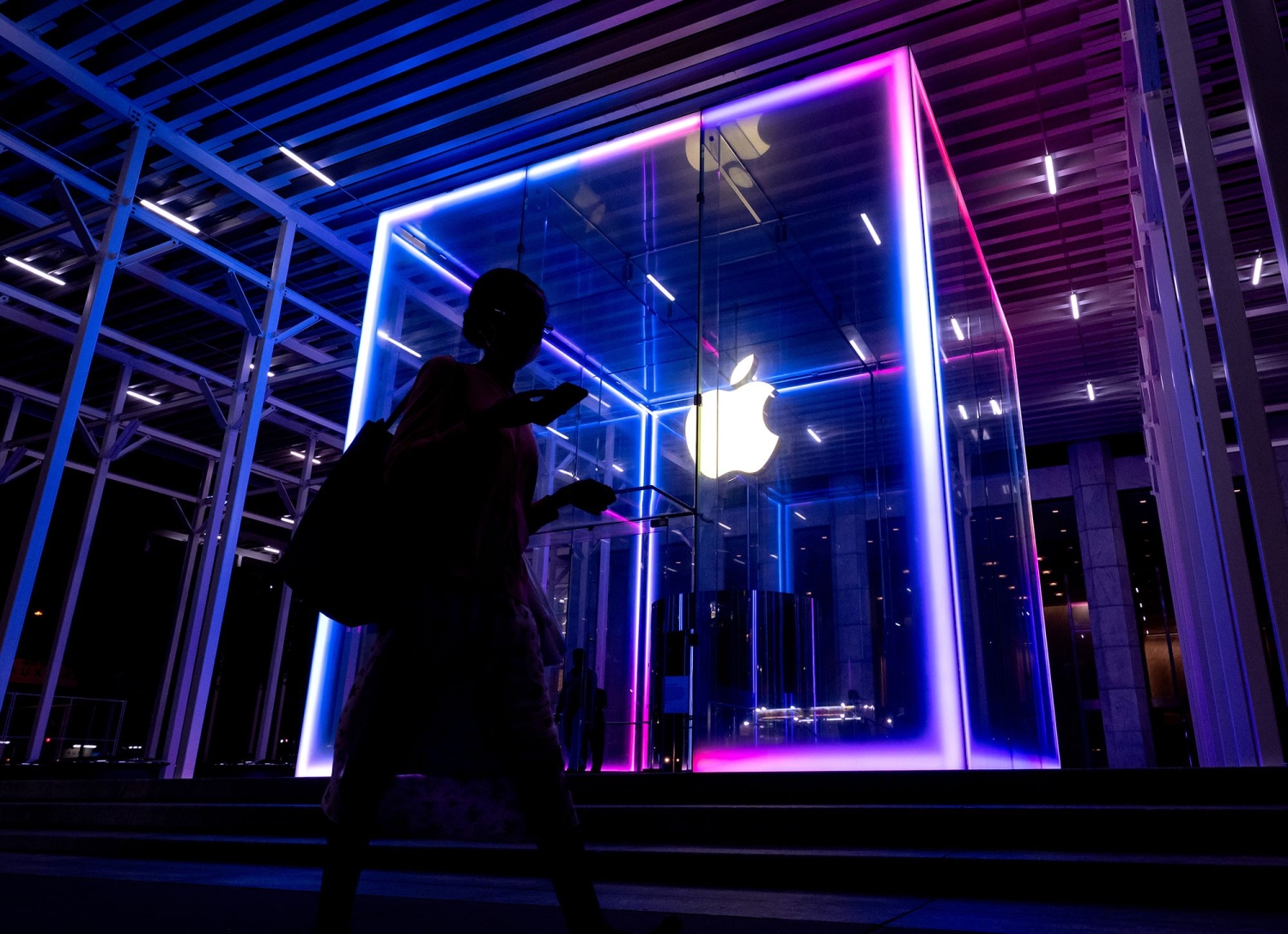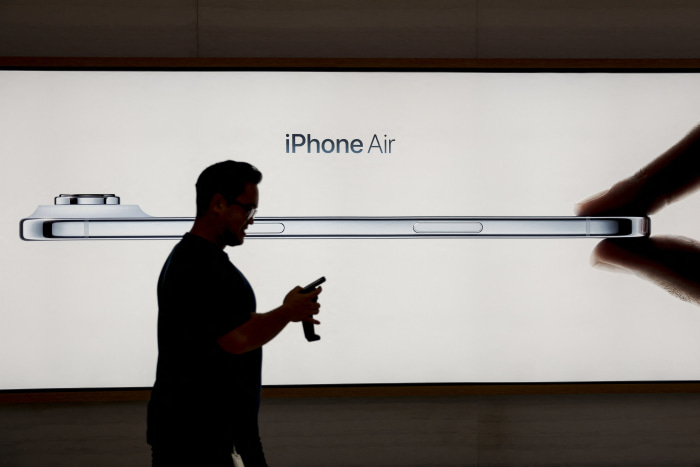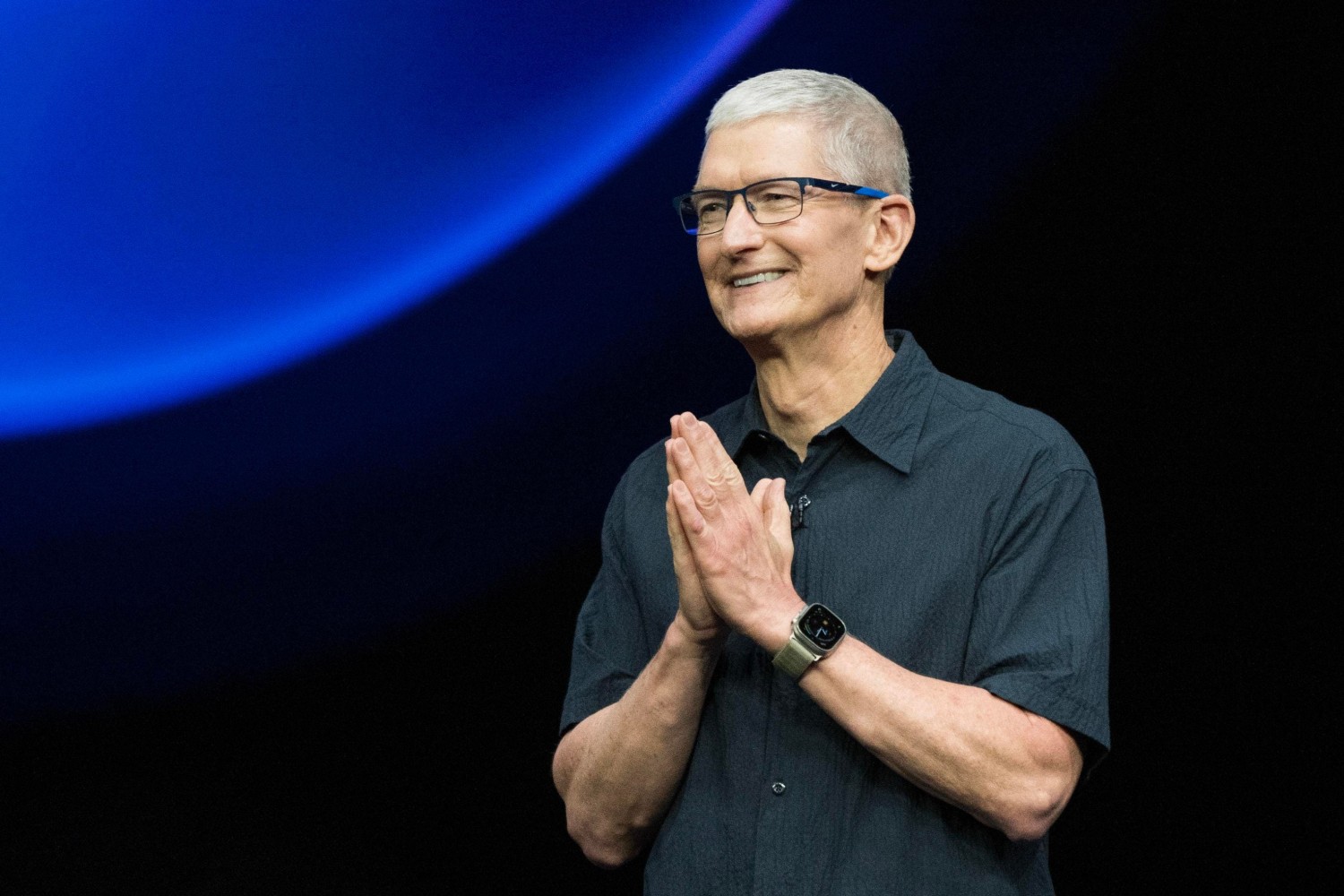
This article is more than
8 year oldApple needs to stop relying on its cult and focus more on customer satisfaction than profit
From mercilessly defending the smallest criticisms of the tech giant’s products online to lining up for days outside of its flagship stores to be one of the first to get an ever so slightly better iPhone, Apple has been able to attract fanboys unlike any of its competitors.
And while the “Cult of Apple” might be well-deserved, it appears the tech giant is starting to take it for granted and constantly banking on the fact its customers will stick by the company regardless of the decisions it makes.
I understand we live in a ruthlessly capitalist society and companies need to keep making a profit in order to survive, but I can’t help but feel Apple is delivering its customers the middle finger over and over again. It’s primary focus seems less on making our lives easier and more on making them more money.
Take the tech giants latest 9.7-inch iPad for example.
The product is a thin, elegant and powerful tablet with a starting price of $469, which makes it a relatively cheap solution to those not wanting to drop the money for a new laptop.
On the surface its all very kosher, but when mobile repair website iFixit pulled apart the iPad
in the name of helping the consumer, it discovered a nasty little secret that is not great news for anyone who breaks the device.
As with the predecessor model, the iPad has been built in such a way that it would be almost impossible for customers to perform a DIY fix on the product, which means customers are forced to rely on Apple to perform repairs — generally the most expensive option.
According to iFixit, which gave the iPad a repairability score of just 2/10, there a number of features that can actually do more damage to the device during a fix.
“Just like in previous iPads, the front panel is glued to the rest of the device, greatly increasing the chances of cracking the glass during a repair,” iFixit wrote.
“Gobs of adhesive hold everything in place. As with its Air 1 predecessor, this ranks among the most difficult battery removal procedures we’ve seen in an iPad.
“The LCD has foam sticky tape adhering it to the front panel, increasing chances of it being shattered during disassembly.
“You can’t access the front panel’s connector until you remove the LCD.”
All of these factors combine to make a simple fix much more difficult and costly if things go wrong, meaning the safest option is to drop some serious cash at Apple’s Genius Bar — this could only be made slightly cheaper if you have invested in an Apple Care plan.
Apple has been contacted for comment on this issue.

The iPad isn’t the only product to introduce this type of repair monopoly, with Apple’s forthcoming iPhone 8 tipped to be designed to ensure the tech giant gets your money from one of the most common problems people have with their device — a cracked display.
It has to do with the device tipped to have a full-screen OLED display without a physical home button, meaning the Touch ID fingerprint-reading sensor will be moved into the screen itself.
As it currently stands, the Touch ID sensor is the only part of the iPhone that has to be replaced by Apple because it is paired with the Secure Enclave — a chip providing all cryptographic operations for data protection, including Touch ID, Apple Pay and passcodes.
Given the fingerprint data is actually stored on the Secure Enclave, it is impossible to get replacement Touch ID sensors to work on your existing phone.
“[The secure data] is encrypted and authenticated with a session key that is negotiated using the device’s shared key that is provisioned for the Touch ID sensor and the Secure Enclave,” Apple wrote in a security document.
So, essentially, new touch sensors will not be able to work as the component cannot be paired with the existing Secure Enclave in your phone — a feature needed to ensure someone can’t take data from your encrypted phones by simply putting in a new button assigned to their finger.
Apple is able to get around this problem with the tech giant has a “calibration machine” located in every flagship store that is capable of recalibrating the new sensor to work with your existing phone.
The machines are believed to cost between $20,000 and $60,000, and to ensure they remain hidden from the public, an Apple employee said it’s impossible to even photograph one.
Apple denied to comment on this issue.

While the iPhone 8 repair monopoly remains purely speculative at this point in time, there is past evidence of Apple putting profit in front of consumer satisfaction.
Remember the donglegate controversy that surrounded the 2016 release of Apple’s MacBook Pro line-up?
In case you forgot, Apple removed all of its MacBook Pro legacy ports, except for the 3.5mm headphone jack — a strange choice given it removed that very port from its iPhone 7 because it believed it was an outdated and irrelevant feature.
The decision meant there were no longer ports for USB 3, HDMI, SD Card or even Apple’s MagSafe connector, with the tech company opting for four USB Type-C ports.
While USB-C is the next-generation industry standard as it offers ultra-fast data transfer speeds, device charging and video output, it meant Apple customers were forced to buy a number of dongles to effectively use their new MacBook Pro.
As the latest iPhone 7 charging cable is USB 3 to Lightning, a dongle was needed so customers can charge Apple’s latest smartphone on its most recent MacBook Pro.
With no HDMI port on the new laptops, another dongle was be required to hook your MacBook up to a television screen.
There was also the need to purchase additional dongles to use SD Cards, VGA and Thunderbolt 2 connected devices, and Ethernet cables.
At the time of release, adding all of these products to your shopping basket from Apple’s online store put an additional $378.85 to the cost of the MacbBook Pro.
Thankfully, after the heavy backlash Apple slightly reduced the price of its dongles — but it was still making a profit from it’s “valued customers” don’t you worry about that.
Apple also denied to comment on this issue at the time.

Just this week, Apple caused another stir when it was discovered owners of older iPhones might soon be forced to upgrade, with Apple tipped to cease support for previous models of its phones.
Despite being supported by the iOS 10.3 update Apple released earlier this week, the tech giant is tipped to drop the iPhone 5, iPhone 5c and the fourth generation iPad later this year.
Eagle-eyed analysts made the discovery when looking into the code of the iOS 10.3.2 beta, which was made available to developers shortly after the iOS 10.3 release.
IT specialist Zeph. McLearan tweeted a picture of Apple’s code showing it makes no mention of any of the older 32-bit devices in the iOS update — only including modern iPhones with 64-bit processors.
Although the gadgets would still function in theory, it would be impossible to install the latest apps or downloads official Apple patches to protect hackers from exploiting security holes.
Apple has the option to build in support at a later date as the firmware is still in beta testing, but its something to be mindful of if you own any of the above mentioned products.
In addition the cost of add-ons, repairs and replacement of its devices, Apple also has shown it doesn’t mind making its customers wait for products it has advertised.
The iPhone 8 hasn’t even been released yet, but industry reports are already suggesting Apple will be struggling to get the tenth anniversary edition iPhone out in time for Christmas — despite likely showcasing the product in September.
This will be nothing new for the tech giant which saw similar problems with the launch of its flagship products last year.
During the September launch, Apple provided an answer to the removal of the headphone jack in the form of its AirPod wireless earbuds.
Apple said the product would be available for $A229 from late October, but the AirPods didn’t go on sale until just before Christmas.
The AirPods were just one of the delays from the launch, which started with the Aussie teenagers who lined up outside of the Apple store for more than 72 hours to secure a jet black iPhone 7 Plus, only to be told the units weren’t available in stores because they were already sold out.
In fact, the jet black model of the iPhone 7 and 7 Plus became increasingly rare, people ordering the phone had to wait more than a month to get the product.
I mean, it’s cool that you make great products Apple, but how about putting a little more thought into your consumers because the fanboys might not stick around forever.
Continue the conversation in the comments below — alternatively, Apple fanboys can send hate and abuse to Matthew Dunn on Facebook or Twitter.




